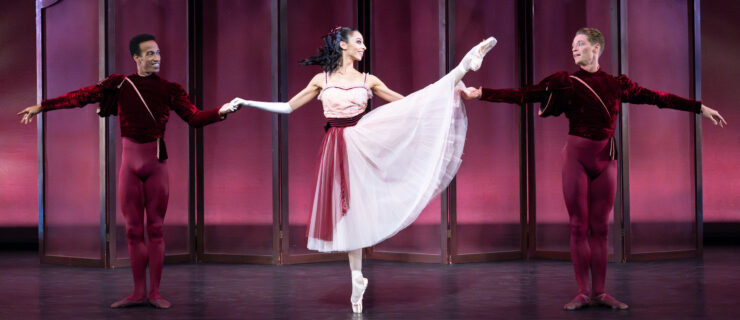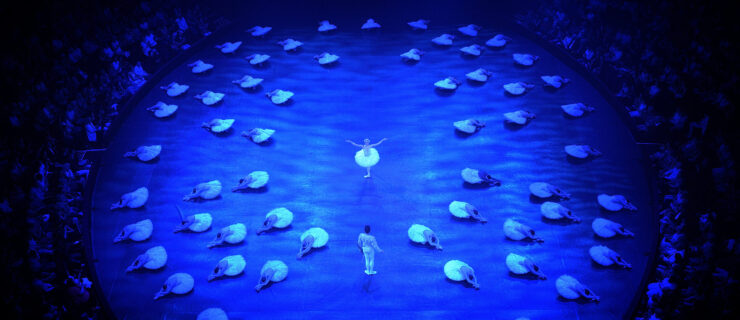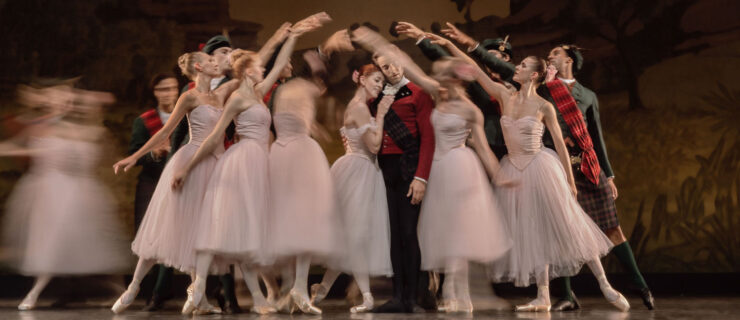Call Board
Project Plié
American Ballet Theatre’s new diversity initiative
Diversity remains one of ballet’s biggest issues, and American Ballet Theatre hopes to be a leader in finding a solution. “We need to be relevant to broader communities,” says chief executive officer Rachel Moore. “The demographics of this country are radically changing. If ballet companies don’t embrace that, we’re going to be relegated to irrelevance.”
ABT has decided to start from the ground up. Beginning this fall, a new company program, Project Plié, will identify and provide training for talented non-Caucasian students. For the first year, ABT plans to award approximately 25 to 30 scholarships to its Jacqueline Kennedy Onassis School, ABT summer intensives or students’? home studios. “?I think it?s clear that dancers of color, especially of African descent, are extremely underrepresented in our professional ballet companies in this country,” says? Moore. Project Plié will also provide scholarships to ballet teachers of color and those who work primarily in communities of color to help them complete the ABT National Training Curriculum, and fellowships to students of color interested in arts administration, so they can intern with ABT. “?It’s not just about what?’s onstage,”? says Moore. “?Diversity needs to be reflected throughout the institution.?”
Moore, who worked on a similar program to diversify orchestras in the ’90s, hopes to add further components to the program as it develops. “When an artist steps onstage, they bring who they are, their background, and it enriches ballet to have more voices with different perspectives,” she says. “This process may not be quick, but it has the power to strengthen the art form.” —Jennifer Stahl
Kudelka Returns to National Ballet of Canada
Choreographer James Kudelka, who was artistic director of The National Ballet of Canada for nearly a decade, has had limited contact with the company since his departure in 2005. This season, he returns to his former home, creating a new ballet for NBC’s November “Innovation” program. Kudelka will also stage several of his full-length ballets during the 2013–14 season, another sign that the choreographer’s relationship with the company is on the mend.
Kudelka says the new commission came through his agent. “I am a freelance choreographer and opportunities to create ballets on whatever scale are always welcome,” he says. “In theory I am less excited to work on the revivals of my full-length ballets, but once my feet hit the ground and I am in the studio with the dancers, I find reason to look back on these ballets.”
The new work, which will feature about a dozen dancers, is set to Pergolesi’s Stabat Mater—a meditation on Mary’s suffering during Jesus’ crucifixion. “I have been waiting for an opportunity to use this score in a live situation,” Kudelka says. “It is a piece of music of rare and satisfying beauty, describing a horrific event. I am sure that I will find something in that to make a dance about.” He’s also looking forward to working with a relatively modest group of dancers. “In my years as artistic director I had to concern myself with using all the dancers all the time,” he says. “I have lately appreciated being able to work with smaller numbers within a larger organization.” —Margaret Fuhrer
Twyla Tharp on PNB
Pacific Northwest Ballet has named Twyla Tharp its first-ever artist-in-residence.
Pointe editor Margaret Fuhrer talked to Tharp about the new role, and her latest work for the company, Waiting at the Station, part of an all-Tharp program that runs through October 6 in Seattle.
You first got to know PNB artistic director Peter Boal when he was dancing with New York City Ballet. How did he earn your trust as a dancer?
Have you ever had the privilege of seeing Peter dance? He was a phenomenally accomplished dancer, very demanding and precise—no compromises.
Why did the artist-in-residence position at PNB appeal to you?
I’ve worked quite a bit now in Seattle, and there are dancers there I’m fond of. I like the community, too. I actually have a very sweet couple that I stay with there who are like my mother and my father—I call them Mommy and Daddy.
In your previous visits to PNB, you’ve given input on lighting design and costumes. Will all of that be a part of your artist-in-residence role, as well?
Santo Loquasto is doing wardrobe and scenic design for the new piece. I’ve worked with him since the beginning of time.
But are you personally going to be hands-on?
Well, if they ask my opinion, I’m always fairly outspoken.
You’ll also be doing a lecture-demonstration. Why is this an important component for you?
I like lecture-demonstrations. They open the audience to aspects of the work that they want to know about but don’t know they want to know about. It’s discussing what’s under the hood of the car, and how all the nuts and bolts go together. To me it’s a privilege to present those things, and then to have the opportunity for dialogue, and to see if what I think is important is what the audience thinks is important.
You’re working with blues composer and pianist Allen Toussaint on
Waiting at the Station. Why did you choose him?
Keyboard blues is something that’s been with me forever. Toussaint is one of the singular exemplars who’s directly connected to legendary blues singer and pianist Professor Longhair, and through him to all these great American pianists. And he himself is no small shake.
What about today’s ballet dancers do you admire?
I think, frankly, it’s not fair to say “ballet dancers.” When I made Deuce Coupe for the Joffrey in 1973, there were modern dancers and there were ballet dancers. Now there are dancers who are technically astute, who are trained to do both sides of the fence, as I say.
Diana Vishneva’s On the Edge
Internationally acclaimed ballerina Diana Vishneva premieres “Diana Vishneva: On the Edge” this November at California’s Segerstrom Center for the Arts. The program will include new pieces choreographed for her by Les Ballets de Monte Carlo artistic director Jean-Christophe Maillot and renowned contemporary artist Carolyn Carlson.
“On the Edge” marks the continuation of the Mariinsky Ballet and American Ballet Theatre star’s curiosity about choreography outside of classical ballet. Her experimental 2008 program, “Diana Vishneva: Beauty in Motion,” earned her Russia’s prestigious Golden Mask Award. —Juliana LaBianca
Ratmansky Tackles The Tempest
American Ballet Theatre’s fall season this October at the David H. Koch Theater opens with Alexei Ratmansky’s take on Shakespeare’s The Tempest, set to music by Jean Sibelius. The season also includes several revivals, most notably Twyla Tharp’s Bach Partita, made for ABT in 1983 but not performed since 1985. —MF




